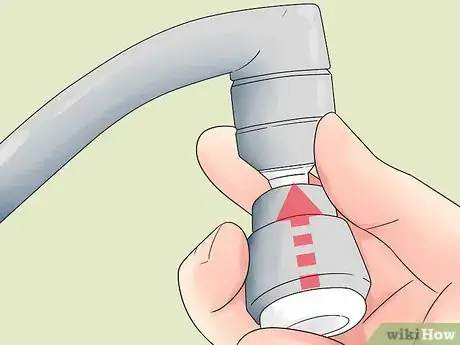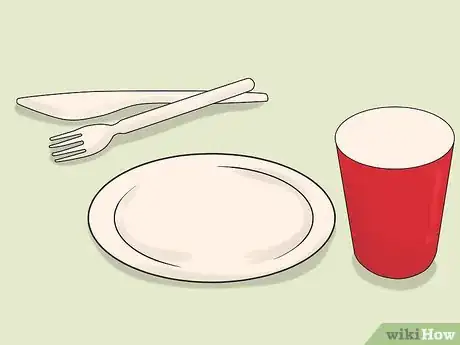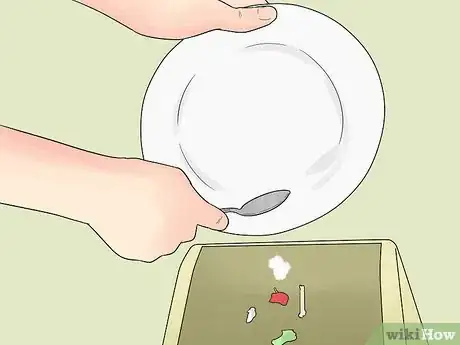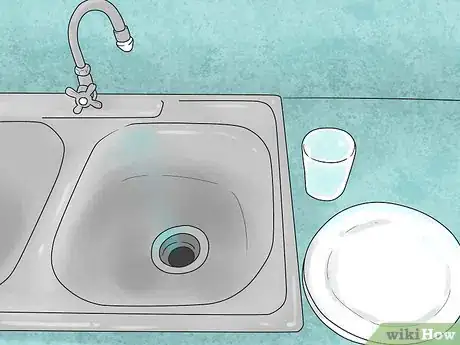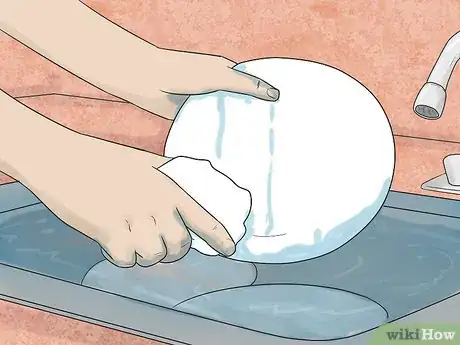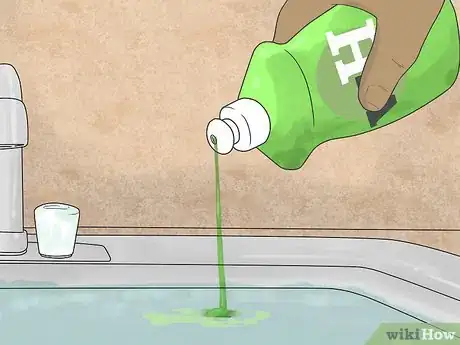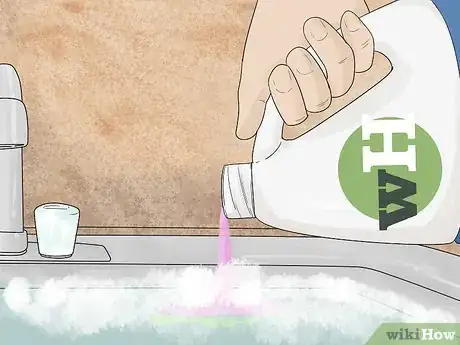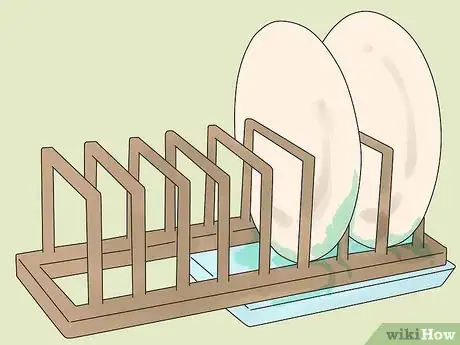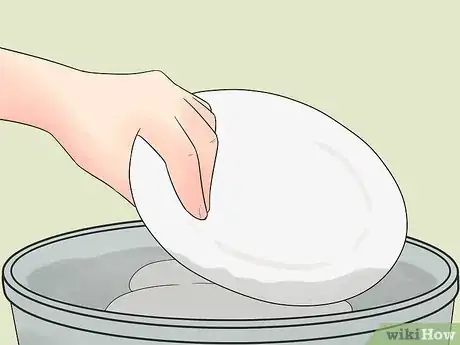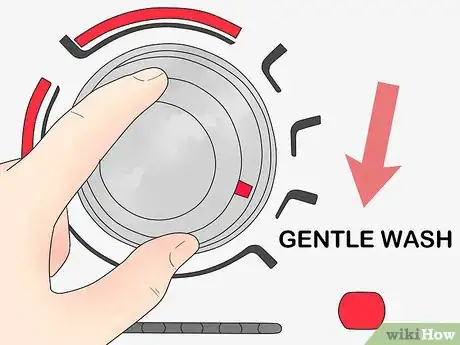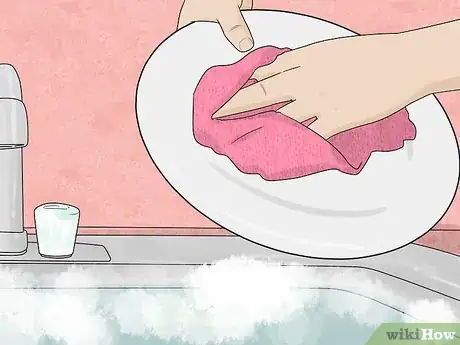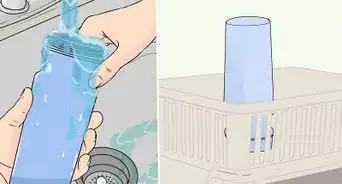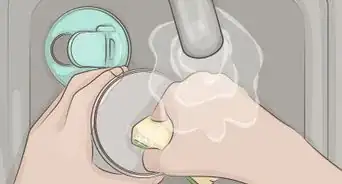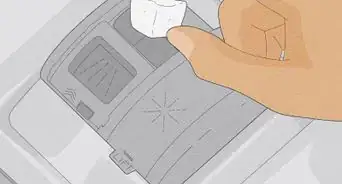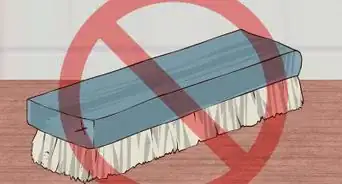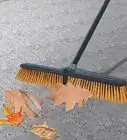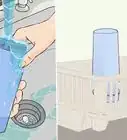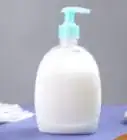This article was co-authored by Gevorg Grigorian. Gevorg Grigorian is an Appliance Repair Specialist and the Owner of G and R Appliance Repair in Los Angeles, California. With over 12 years of experience, Gevorg specializes in residential and commercial appliance repairs as well as heating, ventilation, and air conditioning (HVAC) services. Gevorg holds a BS in Business Administration and Management from California State University-Northridge.
This article has been viewed 107,581 times.
Saving water is important for the environment and for your water bills! Doing the dishes uses up a lot of water, but you can save up to 20 gallons per wash by keeping the sink off as much as possible, using the most efficient dishwasher settings, and avoiding using the garbage disposal or soaking dishes.
Steps
Saving Water Before You Wash
-
1Install a low-flow faucet. You can save water by installing an energy-efficient faucet to restrict the water flow. This is especially useful if you have a household member who leaves the tap running![1]
-
2Consider using disposable dishes. It is difficult to tell how much water gets used to produce dishes, but disposable dishes like paper or plastic plates use much less water in your home. Try scraping or wiping food off plastic plates instead of rinsing them off.
- If you choose to use disposable plates, double check your city's bylaws on recycling and household waste management. Some cities will not accept plastic plates for recycling and others may consider used paper plates to be part of organics (biodegradable) waste instead of regular garbage. [2]
Advertisement -
3Scrape your dishes. Don’t use the faucet to power-wash food off your plates. Scrape off solid food and garbage with a utensil over the garbage can or compost bucket. Don’t use the garbage disposal to get rid of food scraps--it uses water too.
-
4Gather your dishes. Before you start washing, put all the dirty dishes including porcelain, ceramic, and even plastic, next to the sink or dishwasher so you don’t have to turn the faucet on and off while bringing the dishes over. Be sure to check the rest of your home for stray coffee cups or snack plates.[3]
-
5Start washing right away! The sooner you start washing your dishes after eating, the less water you’ll use. If you let food harden on your dishes, you’ll need to use more water to soak them and wash them.
Washing Dishes by Hand
-
1Use the right amount of detergent. Using too much detergent can increase your water usage--if you have big, fluffy suds towering over your sink, you’ll need much more water to rinse those dishes off. Use the amount specified on the label, and add more only if necessary.[4]
-
2Fill the sink with warm, soapy water. Instead of washing each dish individually in running water, fill up your sink with water and detergent, turn off the tap, and wash a stack of dishes at a time. Don’t drain or refill the sink unless the water becomes cold, dirty, or loses all its suds.[5]
-
3Rinse your dishes in standing water. Don’t run the tap over your clean dishes to rinse them off! Instead, fill up the sink or a large bowl with cool water and rinse your dishes by immersing them in the water. You won’t need to refill the rinsing water unless it gets very soapy.
-
4Collect water from drying dishes. Put a tray under your drying rack to catch water dripping off your dishes. You can use this water for your plants or for washing your countertops.[6]
Using a Dishwasher to Save Water
-
1Maintain your dishwasher. Keeping your dishwasher in good repair will save you water by cleaning more effectively. Check regularly for clogs, broken spinners, and other problems. If your dishwasher needs replacing, consider buying an energy-efficient model to save even more water.[7]
-
2Rinse as little as possible. Many newer dishwashers don’t require pre-rinsing at all, so if you have one, you can skip rinsing completely. If you do have to rinse dishes before running the dishwasher, use the washer’s pre-rinse cycle instead of rinsing them in the sink--it uses less water.[8]
-
3Use the lowest effective setting. Don’t run a load of dinner plates on the pots and pans setting--it wastes water! Use the lowest setting on your dishwasher that will still get your dishes clean, and save high settings for big messes.[9]
-
4Wash full dishwasher loads. If your dinner didn’t use up enough dishes to fill the dishwasher, wait until after breakfast to run it. Running partially-filled dishwasher loads wastes water. If you need a specific dish but the dishwasher isn’t full yet, wash it individually by hand in a bowl of warm soapy water instead of running the entire dishwasher.[10]
Community Q&A
-
QuestionHow much water can I save if I don't run the water?
 Community AnswerOn average, probably 15-20 gallons if not more.
Community AnswerOn average, probably 15-20 gallons if not more.
Warnings
- Don’t use so little water that you can’t clean your dishes. If you have to choose between using more water and maintaining good hygiene, always choose hygiene.⧼thumbs_response⧽
Expert Interview
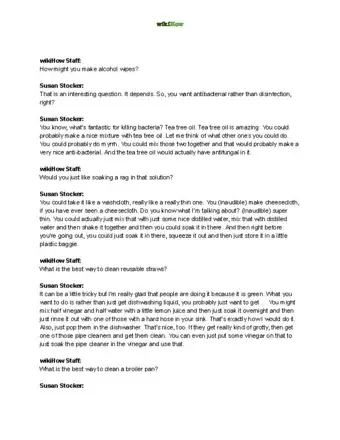
Thanks for reading our article! If you'd like to learn more about conserving water, check out our in-depth interview with Susan Stocker.
References
- ↑ https://austintexas.gov/department/save-water-while-washing-dishes
- ↑ http://www.latimes.com/local/california/la-me-fort-bragg-paper-plates-20151013-story.html
- ↑ https://www.frugalandthriving.com.au/how-to-hand-wash-dishes-using-minimal-water/
- ↑ https://www.frugalandthriving.com.au/how-to-hand-wash-dishes-using-minimal-water/
- ↑ https://www.frugalandthriving.com.au/how-to-hand-wash-dishes-using-minimal-water/
- ↑ https://www.frugalandthriving.com.au/how-to-hand-wash-dishes-using-minimal-water/
- ↑ https://austintexas.gov/department/save-water-while-washing-dishes
- ↑ https://austintexas.gov/department/save-water-while-washing-dishes
- ↑ https://austintexas.gov/department/save-water-while-washing-dishes
